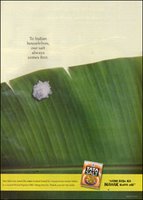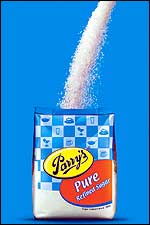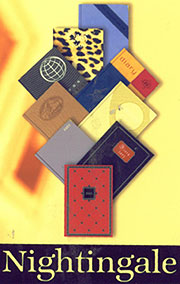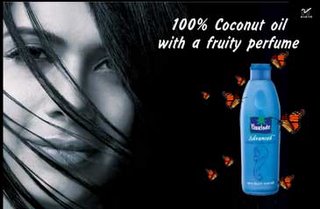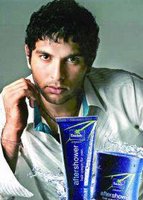Company: BPCL
Agency: Saatchi & Saatchi
Brand Count : 187
Speed is India's first branded petrol.Launched in 2002 by Bharat Petroleum Corporation ( BPCL) , the brand assured in the concept of positioning and differentiation in the Petroleum marketing which was by nature a commodity.

Speed is marketed as a high performance petrol. Speed is the blend of petrol with high speed additives sourced from Chevron Texaco. The additives are expected to increase the performance of the vehicle.
The branding of petrol is more difficult than any other products because of the following reasons:
a. The customers are very price sensitive. With the petrol prices moving upw ards always, spending a premium for branded petrol is a tough call for a customer.
ards always, spending a premium for branded petrol is a tough call for a customer.
b. There is no tangible benefit that branded petrol can offer to the customer. The advantage of using Speed will not be visible to the customer at the outset. The change may have to be noticed on the performance of the vehicle .
In that sense, Speed has been very successful in creating a niche in this market. The brand is said to be contributing 25% of the total petrol sales of BPCL. Speed is said to have 50% share in the branded petrol segment.
BPCL has carefully nurtured this brand. The brand name itself gives a headstart to the acceptability for the brand since Speed is linked to Performance. Speed is positioned as High Performance Petrol. The company has roped in Narain Karthikeyan as its brand ambassador. The TVCs and the print and outdoors reinforced the positioning of the brand as a performance booster. Narain's was a right choice for the brand since he personifies performance driving in India.
Speed has competition from Indian Oil brand: Extra Premium. Besides using Narain as its brand ambassador, BP also has other campaigns promoting the brand on performance . Speed also extended itself to include Diesel fuel under the Hi-Speed diesel brand.
Even before the launch of branded petrol, BP had initiated a corporate campaign " Pure For Sure" to position the company as one that provides the Purest Petrol/Diesel.The campaign was aimed at promoting retail outlets selling fuels. Another corporate campaign was " Energising Lives" aimed at raising the corporate image beyond fuel retailing. These moves were to preempt the competition arising out from private players like Reliance Industries entering the fuel retailing segment.
With fuel prices touching new heights and with customers looking for alternate fuel options, it will be tough for Speed to convince the customer to pay a premium for the brand.
The branding of petrol is more difficult than any other products because of the following reasons:
a. The customers are very price sensitive. With the petrol prices moving upw
 ards always, spending a premium for branded petrol is a tough call for a customer.
ards always, spending a premium for branded petrol is a tough call for a customer.b. There is no tangible benefit that branded petrol can offer to the customer. The advantage of using Speed will not be visible to the customer at the outset. The change may have to be noticed on the performance of the vehicle .
In that sense, Speed has been very successful in creating a niche in this market. The brand is said to be contributing 25% of the total petrol sales of BPCL. Speed is said to have 50% share in the branded petrol segment.
BPCL has carefully nurtured this brand. The brand name itself gives a headstart to the acceptability for the brand since Speed is linked to Performance. Speed is positioned as High Performance Petrol. The company has roped in Narain Karthikeyan as its brand ambassador. The TVCs and the print and outdoors reinforced the positioning of the brand as a performance booster. Narain's was a right choice for the brand since he personifies performance driving in India.
Speed has competition from Indian Oil brand: Extra Premium. Besides using Narain as its brand ambassador, BP also has other campaigns promoting the brand on performance . Speed also extended itself to include Diesel fuel under the Hi-Speed diesel brand.
Even before the launch of branded petrol, BP had initiated a corporate campaign " Pure For Sure" to position the company as one that provides the Purest Petrol/Diesel.The campaign was aimed at promoting retail outlets selling fuels. Another corporate campaign was " Energising Lives" aimed at raising the corporate image beyond fuel retailing. These moves were to preempt the competition arising out from private players like Reliance Industries entering the fuel retailing segment.
With fuel prices touching new heights and with customers looking for alternate fuel options, it will be tough for Speed to convince the customer to pay a premium for the brand.
Related topic
Branding a commodity
Source:agencyfaqs,businessline
image source: agencyfaqs



